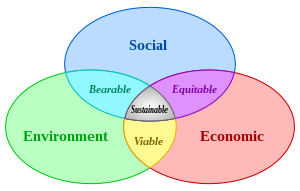
Credit: gambling911.com
Now that Super Bowl 2014 is over, it is time to do a sustainability assessment. It is important to do this because the super bowl is the largest annual event held in America, and effort must be undertaken continuously to ensure that all aspects of this event are sustainable in terms of environmental and human impact.
Venue: MetLife Stadium
The NFL’s selection of MetLife Stadium in East Rutherford, New Jersey was appropriate in terms of the facility in and of itself. MetLife Stadium is the home of the New York Giants and the New York Jets. It is deemed “the greenest stadium in the US.” This stadium was constructed on a parking lot between the old Giants stadium and Meadowlands Raceway. The construction of MetLife Stadium had absolutely no impact on greenfield land or natural habitats.[1] MetLife Stadium seats 82,000 people and has 13,000 parking spaces, each costing $150 a piece for Super Bowl 2014.
MetLife Stadium has excellent public transportation links (for normal Giants or Jets game day traffic), and a considerable percentage of football fans use public rail and bus networks to travel to and from the stadium on game days or to attend special events, i.e., concerts.
MetLife Stadium’s 82,000 seats are constructed from 80% recycled cast iron and 20% recycled plastic. There are 2100 HD monitors throughout the facility with a sound system that boasts 2,500 speakers.
MetLife Stadium’s partnership with the Environmental Protection Agency successfully crafted a facility worthy of the designation as one of the most energy-efficient stadiums in the U.S. MetLife Stadium also owns bragging rights to the first certified green restaurant in the world. Some key green facts about MetLife Stadium are:
- Water: Reduced annual water consumption (in comparison to the old Giants stadium) by 25% with savings derived from low flow toilets and waterless urinals, synthetic turf and natural plants.
- Power: Its solar ring has produced 350,000 kilowatts of energy as of February 2013, and it uses 30% less energy by employing Energy Star equipment, automated lighting, efficient windows and biodegradable fuels with reusable fluids in outdoor transformers.
- Construction materials. Made from 80% recycled cast iron and 20% recycled plastic.
- Reduced carbon footprint: Since opening in 2009, MetLife Stadium has avoided 3,176,250 vehicle miles and reduced its carbon footprint by 268,828 metric tons of carbon dioxide.

Credit: social.quintevents.com
Drawbacks and problems
MetLife Stadium is a state-of-the-art facility. Perhaps its biggest drawback in terms of hosting an event of the magnitude of Super Bowl 2014 is its physical location. The NFL dodged a bullet Sunday for the Super Bowl with clear, unseasonably warm weather for the game (temperature at game time was 49 degrees). Bad weather did move in by the end of the game, with rain, sleet, snow and icy roads making travel on Monday a horrific experience for many of the fans. Many people found themselves stuck in the New York area as a large number of flights were cancelled. Hopefully, the reality of climate change in planning huge events will become a major consideration of the NFL.
Secondly and perhaps most important, the location of Super Bowl 2014 in New Jersey with reliance on public transportation to move people proved to be an epic failure. The public rails and buses were ill-equipped to deal with commuter demand. Additionally, the high level of security warranted for an event of this magnitude severely hampered the flow of people into MetLife Stadium, even to the point of people collapsing from exhaustion during excessive wait times at Secaucus Junction.

Super bowls clearly are momentous events in the United States, and as such, the NFL must incorporate sustainability in the planning of this annual event. To date, the NFL has proven that it can deliver an environmentally sustainable product in terms of facility or “stuff,” as witnessed by MetLife Stadium. However, the human components of sustainability must be given equal consideration. In its attempt to host the first mass transit Super Bowl, the NFL had a duty to thoroughly evaluate the human factors and to have contingency plans in place to avoid a transportation debacle. Also, the NFL’s Fan Express pre-ticket coach bus program plan needs to be evaluated and fine tuned to flawlessly control people movement.
In conclusion, with all the hoopla about Super Bowl 2014, proponents of the green movement really would have appreciated it if the NFL had done more to showcase its efforts at sustainability. With 111.5 million viewers tuned in, it would have been nice to see commercials highlighting the NFL’s commitment to commitment to green business and sustainability. This really presented a teachable movement to younger viewers.
Now the NFL will go back to the drawing board and incorporate lessons learned from Super Bowl 2014 in its plans for future super bowls. Hopefully, in its plans, green keywords, such as climate change, environmental impact, transportation, people moving, etc., will be central in the dialogue. To ensure the sustainability of future super bowls is to live green, be green.
_______________________
Resources for this article:
1. http://www.treehugger.com/green-architecture/metlife-stadium-home-years-super-bowl-may-be-greenest-stadium-us.html.
2. http://www.sportingnews.com/nfl/story/2014-02-03/2014-super-bowl-television-ratings-record-most-watched-television-event-of-all-time-seahawks-vs-broncos.











